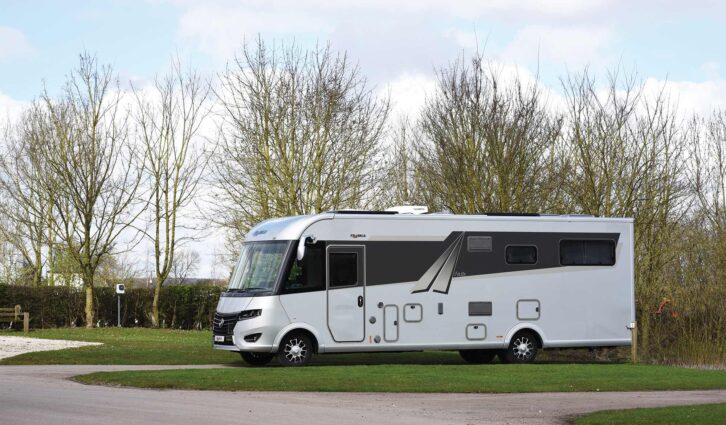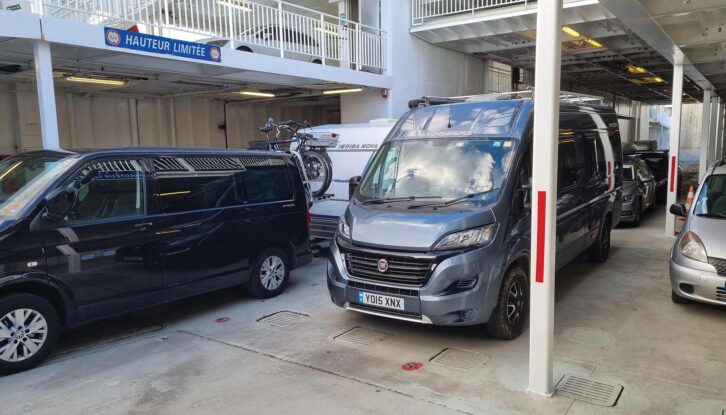Leisure vehicles hate being unused. Just like humans, they get grumpy sitting in one place for months at a time and want to get out and about! In particular, having the weight of the motorhome sitting in one place on the tyres can cause flat spots and having all the engine belts stuck in one position doesn’t do them any good either.
Equally, rodents love to stay out of the winter weather in a cosy crevice on a motorhome and are known to enjoy a nibble on modern wiring.
You could find yourself dealing with a flat motorhome battery if the vehicle isn’t being used, and the lack of interior heating as well as the increase of water ingress issues when the vehicle is stationary for long periods can cause all manner of issues.
The simple solution is to motorhome in winter and enjoy using it all year round – you’ve paid a lot of money for your leisure vehicle, so why not get maximum use out of it? You could even spend Christmas in your motorhome.
Now I appreciate that some of you will be thinking about winterising a motorhome instead. However, there are various benefits to enjoying an off-season getaway.
For instance, if you’re empty nesters, you can also take advantage of lovely empty campsites (read bargain prices) and crowd-free destinations. Admittedly, not all tourist attractions will be open, but any that are will be far quieter than in the summer months and you’ll see a different side to Britain and get to see how the locals live in the off-season.

You can even add the best heater for a campervan to improve the warmth and cosiness of your leisure vehicle (and with various Black Friday motorhome accessory deals already underway, this could be a great time to buy).
However, if you’re not a fan of the British winter, why not embark on a motorhome tour to Europe and catch the last of the winter sun in somewhere such as Spain or Portugal? You’ll enjoy cheaper ferry crossings, less traffic and cheaper campsites.
One word of caution about winter use, though. If the vehicle gets driven through grit, make sure you rinse it off underneath with fresh water. Water and salt is one of the main causes of rust and oxidation on the underside of your vehicle.

If you have good water pressure, use a hose, or get your local car wash centre to do it for you (making sure they set the jetwash to a low power and avoid any seams). You want to hose off the entire underside and pay particular attention to the inner wheel arches and the areas immediately in front and behind the wheels.
In an ideal world, you’d also dry the vehicle off on the underside in a heated garage, but this clearly isn’t practical for most people.
Driving a motorhome in winter
If you do plan to use your vehicle over winter, it pays to make sure you have decent branded tyres fitted to the vehicle. These need to have good tread on them, not just the legal minimum of 1.6mm across the tread width.
Some European countries wisely require winter tyres to be fitted with a minimum tread depth of 3 or 4mm during the colder months of the year.
Most motorhome tyres are actually rated for mud and snow (look for the 3-peak mountain logo on the sidewall for the highest rating) and the ‘Camping’ or ‘C’ marked tyres are actually quite a specialist tyre that has been specifically developed for motorhome use – we’d always recommend using them.
Because most motorhomes weigh in excess of three tonnes (see my guide to motorhome weights for more on this), they tend to bear a lot of point load on each tyre making them quite good at finding grip in snow, ice and slush.
However, even with decent tread depth and winter tyres, stopping a heavy motorhome can be a challenge – allow far more stopping distance than usual and press the brakes gently with good anticipation of the road ahead.

Modern ABS braking systems can work poorly in snow and might trigger early, so if your vehicle has a ‘winter’ or ‘slippery conditions’ traction button make sure that you press it.
Using a higher gear than normal, gentle steering and braking inputs and reduced speed is the key to safe winter driving.
Don’t be in a rush to do anything – there is a lot of mass to move around with a motorhome. With lighter rear-wheel-drive campervans, you should take particular care in winter, especially if you’re running larger alloys with summer tyres on them. The lack of engine weight over the driven wheels can make them more prone to getting stuck.
If you plan on visiting a Scandinavian country, or live in a particularly lumpy bit of Scotland, then it might be worth investing in a second set of wheels fitted with winter-specific snow tyres.
These are far softer than regular all-season tyres and have lots of small wiggly lines (called sipes) cut into them to provide traction.
When I visited Norway a few years ago it was amazing how few four-wheel-drive vehicles there were out there – they just use specialist winter tyres. Even though Britain is classed as a cold climate, dedicated winter tyres are not suitable for all-year round use, because their low-temperature compounds will overheat and wear out rapidly in summer.
For those of you who are embarking on a winter getaway, don’t miss our tips on how to keep a campervan warm in winter, to help you create a cosy interior.
Future Publishing Limited, the publisher of Practical Motorhome, provides the information in this article in good faith and makes no representation as to its completeness or accuracy. Individuals carrying out the instructions do so at their own risk and must exercise their independent judgement in determining the appropriateness of the advice to their circumstances. Individuals should take appropriate safety precautions and be aware of the risk of electrocution when dealing with electrical products. To the fullest extent permitted by law, neither Future nor its employees or agents shall have any liability in connection with the use of this information. Double check any warranty is not affected before proceeding.
If you’ve enjoyed reading this article, why not get the latest news, reviews and features delivered direct to your door or inbox every month. Take advantage of our brilliant Practical Motorhome magazine SUBSCRIBERS’ OFFER and SIGN UP TO OUR NEWSLETTER for regular weekly updates on all things motorhome related.
Leave a Reply